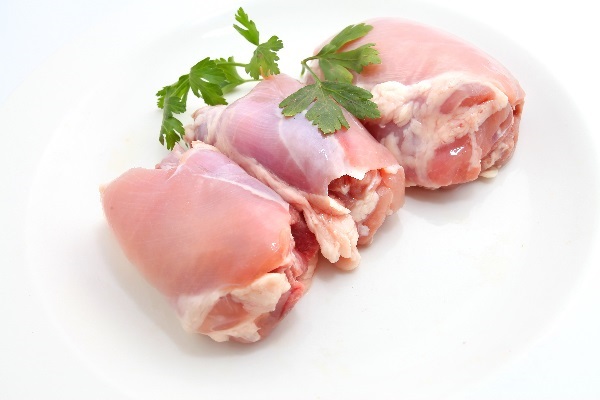When it comes to protein choices, chicken is a staple in most kitchens. But while chicken breast has long been labeled the healthier cut, chicken thighs are finally getting the attention they deserve. Tasty, affordable, and nutrient-dense, chicken thighs offer more than just flavor — they’re a nutritional powerhouse hiding in plain sight.
In this guide, we’ll explore chicken thigh nutrition and uncover five compelling reasons why this cut deserves a permanent spot in your weekly meal plan.
A Closer Look at Chicken Thigh Nutrition
Chicken thighs are often categorized as “dark meat,” which gives them their rich flavor and tender texture. But this label sometimes creates the false impression that thighs are unhealthy. The truth is, chicken thigh nutrition packs an impressive punch — especially if you know how to prepare them well.
A 100-gram serving of cooked, skinless chicken thigh contains approximately:
- 209 calories
- 26 grams of protein
- 10.9 grams of fat
- 0 grams of carbohydrates
This makes them an excellent source of protein, with a modest amount of fat that supports energy and satiety. More importantly, they’re loaded with vitamins and minerals that many of us are often short on.
Chicken thighs are particularly rich in vitamin B6, niacin (B3), phosphorus, and iron — all of which support metabolism, immune health, and cellular repair. They’re also a good source of selenium, which supports thyroid health and antioxidant activity in the body.
1. A Rich Source of High-Quality Protein
Protein isn’t just about building muscle — it’s about sustaining energy, improving recovery, supporting immune function, and even balancing hormones. Chicken thighs offer a generous 25–26 grams of protein per 100g, which can help meet daily needs without needing to rely on red meat or expensive protein powders.
What makes chicken thigh protein so beneficial is its high bioavailability — meaning the body absorbs and uses it effectively. This makes it especially useful for athletes, older adults, and anyone aiming to stay active and strong.
Incorporating chicken thighs into your meal plan ensures that you’re not just getting enough protein, but getting it from a natural, nutrient-dense source that fits well in most dietary patterns.
2. Packed with Essential Micronutrients
Beyond protein, chicken thigh nutrition stands out for its micronutrient richness — a key factor that often gets overlooked in favor of calorie counts.
Vitamin B6, for instance, plays a vital role in brain development, hormone regulation, and nervous system health. Iron supports red blood cell production, which is especially critical for women and individuals with active lifestyles. Zinc helps with wound healing, immune response, and cell repair. And phosphorus supports healthy bones and teeth.
While chicken breast offers many of these as well, thighs usually deliver higher levels of certain B vitamins and iron, making them a better choice for those with deficiencies or increased nutritional demands.
Eating nutrient-dense foods like chicken thighs helps you build a more balanced and sustainable diet — one that doesn’t rely solely on supplements to fill in nutritional gaps.
3. Budget-Friendly and Easy to Prepare
Good nutrition shouldn’t be expensive — and chicken thighs are a great example of that. Pound for pound, they tend to cost less than chicken breast, even though they offer a richer flavor and more forgiving texture during cooking.
Because they don’t dry out as easily as leaner cuts, chicken thighs are easier to cook for beginners and pros alike. Whether grilled, oven-baked, air-fried, or simmered in a stew, they hold up beautifully and require minimal effort to make delicious.
Their affordability and versatility make chicken thighs a practical choice for meal prepping or feeding a family on a budget — without sacrificing nutritional quality.
4. Perfect for a Variety of Diets
Whether you’re following a low-carb plan, a high-protein diet, or just trying to eat better without overthinking every meal, chicken thighs can work beautifully.
Thanks to their naturally low carbohydrate content and high protein and fat ratio, chicken thighs fit into:
- Keto and paleo diets
- Balanced macronutrient plans
- Weight management strategies
More importantly, they provide satisfaction. That feeling of fullness after a hearty, wholesome meal helps prevent unnecessary snacking later on — and this is where the healthy fats in chicken thighs really shine.
Unlike ultra-processed protein options, chicken thighs offer fullness and flavor in one go — which makes sticking to your diet or lifestyle plan much easier over time.
5. The Right Kind of Fats That Support Health
There’s a persistent myth that the fat in chicken thighs is “bad” — but that’s far from true. While they contain more fat than breast meat, much of it is monounsaturated and polyunsaturated fat — the same kinds found in nuts, avocados, and olive oil.
These healthy fats support:
- Heart health
- Hormone production
- Cellular function
And when consumed in moderation as part of a balanced diet, they help keep you satisfied longer, reducing cravings and overeating.
Even if you’re watching your fat intake, you don’t need to skip chicken thighs entirely. Trimming visible fat and cooking them without added oils can make them even leaner — while still preserving their tenderness and taste.

Clearing Up Common Myths
Chicken thighs have unfairly earned a bad reputation over the years, mostly due to concerns about fat content. But science tells us that not all fats are created equal — and chicken thigh fat is far from the enemy.
Another myth is that chicken thighs are “unhealthy” compared to chicken breast. While breast is leaner, thighs offer superior flavor, more iron and B vitamins, and a texture that’s often preferred in various cuisines.
The key to healthy eating isn’t avoiding one cut over another, but understanding how to prepare and balance your portions. In many cases, choosing chicken thighs means you’re more likely to enjoy your meals, stick to your plan, and meet your nutritional needs — naturally.
Simple Ways to Make Chicken Thighs Healthier
Cooking methods matter. Instead of frying or drowning chicken thighs in sauce, try healthier approaches:
- Grill or bake with herbs and a drizzle of olive oil
- Use air-fryers for crispy skin with less oil
- Simmer in broth or tomato-based sauces for low-fat flavor
- Remove the skin if you’re cutting back on fat
- Pair with fiber-rich vegetables and whole grains for a balanced plate
These small changes go a long way in making your chicken thigh meals health-conscious and satisfying.
Is Chicken Thigh High in Protein?
Yes — and it’s more flavorful than chicken breast
Chicken thighs contain a good amount of protein — about 22–25g per 100g of cooked meat, depending on whether it’s skin-on or skinless. That makes them a reliable source for people looking to build or maintain muscle mass.
While chicken breast is leaner, many find thighs easier to cook, juicier, and more satisfying — which helps you stick to your nutrition goals.
Chicken Thigh vs Chicken Breast: Which Is Better for Muscle Gain?
Thighs offer more fat, but still support muscle building
Chicken breast is the leaner choice, with slightly more protein per gram. However, chicken thighs offer more calories and fats, which can be helpful during bulking or muscle-gaining phases.
For those on a calorie-surplus plan, chicken thigh nutrition supports muscle growth without sacrificing taste.
Is Chicken Thigh Good for Weight Loss?
It depends on how you cook and portion it
Yes, chicken thigh can be part of a weight loss diet — especially if you’re choosing skinless, grilled, or baked versions.
Keep in mind:
- Skin-on thighs are higher in fat and calories.
- One medium skinless thigh (cooked) has roughly 140–170 calories.
- Control portion sizes and avoid deep frying.
So yes, if cooked right, chicken thigh nutrition fits a calorie-controlled plan.
What About Fat and Cholesterol in Chicken Thighs?
Chicken thighs contain more fat, but not all fat is bad
Here’s the breakdown:
- Skinless chicken thighs have about 8–10g fat per 100g.
- With skin, the fat content can jump to 15–17g.
- Saturated fat is moderate, but there’s also healthy monounsaturated fat.
If you’re managing cholesterol or heart health, go for skinless, grilled options. It’s all about balance and moderation.
Is Chicken Thigh Bad for Heart Health?
Not necessarily — moderation and preparation matter
Chicken thighs have more saturated fat than breasts, but that doesn’t automatically make them unhealthy.
Avoid deep-fried or heavily processed versions. Opt for:
- Grilled
- Roasted
- Air-fried
When cooked simply and paired with vegetables, chicken thigh nutrition can be heart-friendly.
Can You Eat Chicken Thigh Every Day?
Yes, if it’s prepared cleanly and portions are balanced
There’s nothing wrong with eating chicken thighs daily — as long as:
- You’re varying other food sources.
- You’re not overloading on fats.
- You’re preparing them healthily (grill, bake, steam).
Add a variety of vegetables and grains to keep your meals balanced.
Chicken Thigh in High-Protein Diets: Does It Fit?
Absolutely
Chicken thighs are a favorite in:
- Keto diets (thanks to higher fat content)
- Paleo and Whole30 plans
- High-protein meal prep routines
If you’re tired of dry chicken breast, chicken thigh nutrition adds variety without sacrificing your goals.
Is Chicken Thigh Better Than Fish or Tofu?
Each has its place
- Fish: Lower in fat, rich in omega-3s (especially salmon).
- Tofu: Plant-based, good for vegans, but lower in protein per gram.
- Chicken thigh: Higher in protein than tofu, more calories than fish.
So, depending on your diet, chicken thigh offers an excellent middle ground of protein and taste.
What’s the Best Way to Cook Chicken Thighs?
Healthiest methods:
- Grilled (adds smoky flavor with minimal fat)
- Baked (easy and oil-free)
- Air-fried (crispy without the oil)
Avoid:
- Deep frying
- Heavy sauces
- High-sugar marinades
Simple spices, herbs, and olive oil are enough to make your chicken thighs both delicious and nutritious.
How Does Chicken Thigh Compare to Red Meat?
A lighter, more versatile option
Compared to beef or lamb:
- Lower in saturated fat
- Easier to digest
- Less risk of raising LDL cholesterol
If you’re cutting down on red meat, chicken thigh nutrition is a great alternative.
The Bottom Line
Chicken thigh nutrition is far better than most people think. They’re not just flavorful — they’re rich in protein, loaded with essential nutrients, and surprisingly affordable. From boosting your iron intake to keeping your meals interesting, chicken thighs are more than worthy of a spot on your plate.
Rather than avoiding them, it’s time to start embracing chicken thighs as part of a balanced, sustainable, and enjoyable diet. With the right cooking approach and a little creativity, they can help you stay on track with your health goals — and enjoy your food while you’re at it.
FAQs
Are chicken thighs good for weight loss?
Yes, chicken thighs can support weight loss when eaten in moderation and cooked with healthy methods. They offer protein and satisfying fats that help reduce cravings and overeating.
Is chicken thigh healthier than breast?
Both have benefits. Chicken breast is leaner, while chicken thighs offer more iron, B vitamins, and flavor. It depends on your goals and personal preference.
Can I eat chicken thighs every day?
You can include chicken thighs regularly if your overall diet is balanced. Just rotate with other protein sources to ensure a variety of nutrients.
Are chicken thighs high in cholesterol?
They contain some cholesterol, but it’s not excessive. Most dietary cholesterol doesn’t impact blood cholesterol as much as once thought. Cooking methods matter more.
Should I eat chicken thighs with or without the skin?
The skin adds fat and calories. If you’re watching fat intake, removing the skin is a good option — but enjoying it occasionally is totally fine in a healthy diet.
